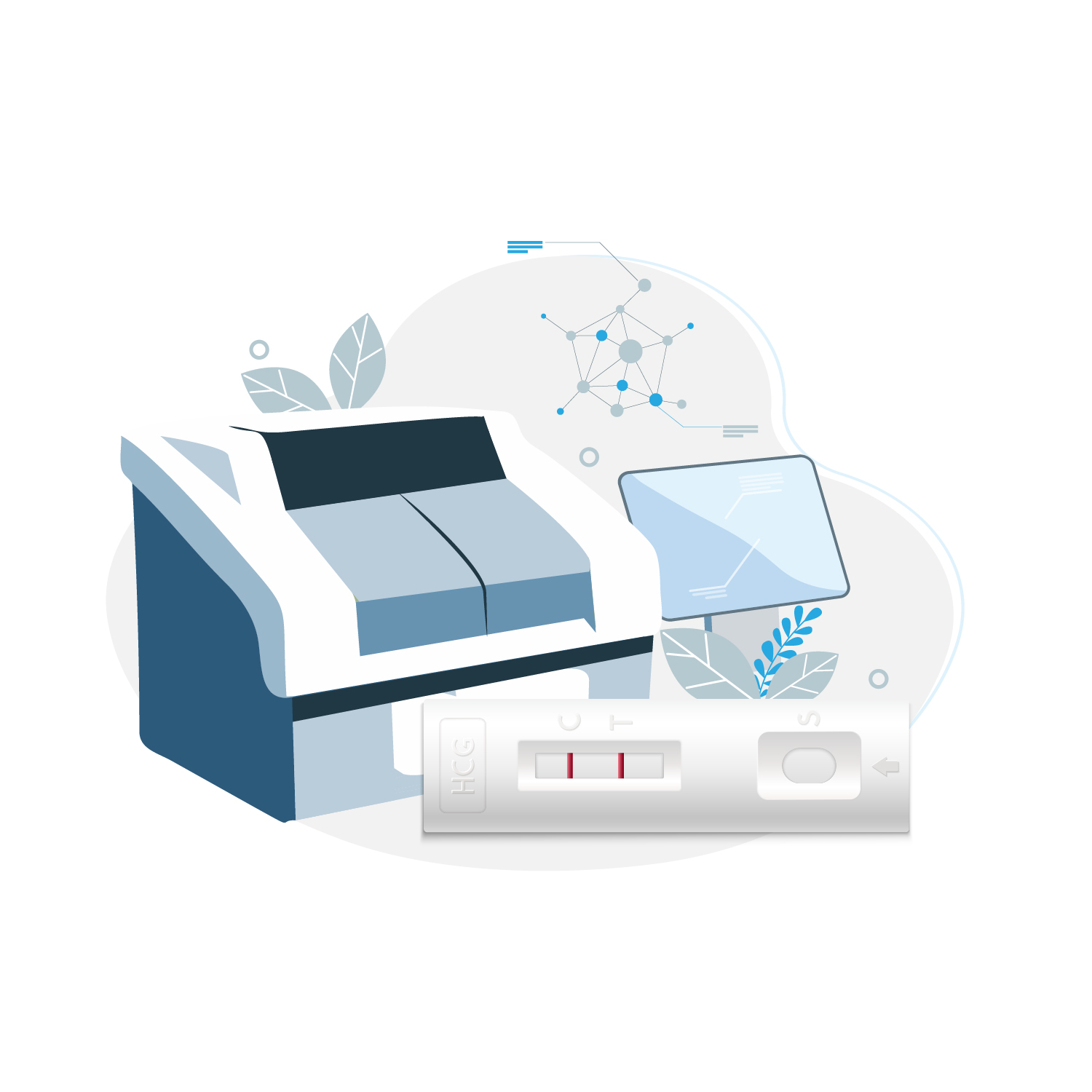CDSCO
In-Vitro Diagnostics Class A & B – The lifeline of Healthcare Industry
CliniExperts manages all regulatory and compliance mandates seamlessly
Obtaining the necessary approvals, licenses, and certifications for these devices, on the other hand, is a Herculean task. Just the plant master file necessitates the submission of over 40 detailed documents spanning 12 different parameters. Then there's the equally lengthy device master file to deal with, as well as SUGAM portal Registration and ISO 13485 certification. The regulatory mandates appear to be indefinite!
That’s not all. A new licensing regime for these devices comes into effect from 01-10-2022.
About Regulatory Body
Manufacturing In-vitro diagnostics necessitates the completion of stringent processes in accordance with the Central Drug Standard Control Organization's rules and regulations (CDSCO). Applicants who intend to manufacture Class A or Class B in-vitro diagnostics must also go through the process of applying for a licence to sell or distribute in-vitro diagnostics.
The CDSCO ensures the quality and safety of in-vitro diagnostics sold in this manner to the public.
Depending on the applicant's location, such applicants must apply to the State Licensing Authority for approval through the Ministry of Health and Family Welfare's online portal.
An application in FORM MD-3 must be submitted, along with the necessary documents for obtaining a licence in FORM MD-5.


About Class A and B In-Vitro Diagnostics
An in-vitro diagnostic is a product used for disease diagnosis, treatment, or prevention in humans or animals.
According to the Medical Devices Rules, 2017, in-vitro diagnostics are classified into four classes based on their risk: Class A, Class B, Class C, and Class D.
Class A and Class B in-vitro diagnostics are considered low-to-moderate risk.
Class A in-vitro diagnostics are low-risk devices that require little to no invasiveness (like specimen receptacles, laboratory instruments)
In-vitro diagnostics in Class B are low-to-moderate risk devices with minimal invasiveness (like fertility tests, and cholesterol tests).
Documents For Manufacturing Class A or Class B In-Vitro Diagnostics
1. Plant Master File- A succinct document entitled Plant Master File (PMF) containing specific information about the medical device design, production, or control at the premises shall be prepared by the manufacturer. This document shall include general information, personnel information, premise and facility details, equipment details, sanitation details etc.
2. Device Master file: Manufacturers must prepare a succinct document in the form of a Device Master File, including specific information about the manufacturing at the premises. It include Device Description and Product Specification, Including Variants and Accessories, labeling details, Essential principles checklist, description of the antigen or antibody sources and their characterization, product inserts etc.
How It Is Regulated?
The licensing authority in India is the Central Standard Control Organisation (CDSCO). The licensing process in a nutshell:
Fill up the exhaustive application Form MD-3 and upload it on the SUGAM portal
State licensing authorities issue permission to manufacture Class A and B In-vitro diagnostics on Form MD-5 after a grueling evaluation process

Why to get manufacturing License before 1st October, 2022
In accordance with notification No. G.S.R. 102(E) dated 11.02.2020, all non-notified In-vitro Diagnostics of Class A and Class B categories are scheduled to enter the licencing regime on 01.10.2022. For Class A and Class B In-vitro Diagnostics, a transition period of 30 months has been provided from the date of implementation of G.S.R. 102(E), i.e. 01.04.2020, for the transition to the licencing regime.
As a result, it is now recommended that all manufacturers apply for a manufacturing licence for Class A & Class B In-vitro Diagnostics through COSCO's online portal so that the manufacturing licence can be granted by respective State Licensing Authorities after review of the applications and audit (as applicable) within the time frame specified.

CliniExperts Can Assist In
In-vitro diagnostics must implement a rigorous product testing regime.
This regime includes a strict compliance protocol in addition to a wide range of testing parameters, including testing on various software.
Once the test licence has been obtained, permission to manufacture is required.
Once all of these parameters have been established, an application for a test licence must be submitted using Form MD-12, and permission is granted using Form MD-13.
Form Names: MD3, MD5
Permission to Manufacture Class A & B In Vitro Diagnostics – MD-3 & MD-5
The licensing authority in India is the Central Standard Control Organisation (CDSCO). The licensing process in a nutshell: Fill up the exhaustive application Form MD-3 and upload it on the SUGAM portal State licensing authorities issue permission to manufacture Class A and B In-vitro diagnostics on Form MD-5 after a grueling evaluation process
Regulatory Body Requirement
The purpose of this service is to obtain license to manufacture Class A and B IVD's in India. The State Licensing Authority is the regulatory body associated with this service. It grants the license to manufacture IVDs for sale or distribution in FORM MD-5 as per Medical Device Rule 2017.
Any person or manufacturing company wanting to manufacture a Class A or Class B IVDs must follow a certain procedure. The applicant must make an application to the State Licensing Authority (SLA) through the identified online portal of the Ministry of Health and Family Welfare in the Central Government in FORM MD-3.
How to Apply
The manufacturer must apply for the Grant of License to manufacture for sale and distribution of Class A or Class B Medical Devices in FORM MD-3 to the SLA.
The following documents need to be submitted along with the application:- A cover letter
- Constitution detail of the firm, the Establishment/Site ownership/Tenancy Agreement
- A copy of duly notarised valid copies of the Quality Certificate concerning the manufacturing site,
- Plant Master file, Device Master file, Performance Evaluation Report (IVDs only)
- Test License obtained for testing and generation of quality control data
- Undertaking signed mentioning the manufacturing site complies with the provision of the Fifth schedule.
The State Licensing Authority reviews the application and appoints a Notified body to conduct an audit of the manufacturing site for Class B Medical Devices. Upon successful audit, the SLA issues the manufacturing license in FORM MD-5.
Form Names: MD7, MD6
Permission for Loan License to Manufacture Class A & B In- Vitro Diagnostics
Financial constraints can prevent you from achieving the success that your business deserves. A loan for manufacturing new notified medical devices of Class A and Class B, or for increasing the scale of production of your existing notified medical devices can help you soar to new heights. Contact CliniExperts today to help you sail through the paperwork and obtain the Loan License for Manufacturing of Class A and Class B notified medical devices via Form MD – 4 and Form MD – 6 in no time!
Regulatory Body Requirement
For manufacturing an in-vitro medical device of Class A & B, a loan license must be taken before starting the manufacturing process at a site of another licence. Any manufacturer who intends to produce a device can apply to the concerned State Licensing Authority. A manufacturer has to go through an online application process for the medical device under the standards laid down by the CDSCO. The application process involves filling the Form MD-4 as an application on the online portal of the Ministry of Health and Family Welfare.
After evaluating the data, the State Licensing Authority can accept/reject the submitted proposal. The acceptance of the Loan Manufacturing License will be given by Form MD-6. The overall process takes about two to three months after applying.
How to Apply
The application must be made under Form MD-4 to the State Licensing Authority. The form has to be submitted on the SUGAM online portal with the necessary documents and payment of the fees.
Form Names: N/A
In-vitro Diagnostics ISO 13485 Certification Assistance
From design, to R&D, testing, manufacturing, sales and distribution, storage, and end-usage – Medical device lifecycles are increasingly controlled by regulatory and compliance mandates. ISO-13485 is designed to ensure the safety, effectiveness, and accuracy of these devices at the user end. Hence, being ISO-13485 certified is critical for all stakeholders – Be it the designers, manufacturers, suppliers, service providers, or distributors.
Regulatory Body Requirement
The purpose of this service is to assist in ISO 13485 certification process. ISO 13485 Certificate is an important Certification required by the manufacturers, designers, suppliers, distributors, and service providers of all medical devices including in vitro devices (IVDs).
The regulatory body involved in the process is the Accredited Notified Body. The following procedure needs to be followed to avail the ISO 13485 certificate:
- Applicant needs to establish Quality Management as per ISO 13485 standards and implement them in the organization
- Upon implementation applicants can reach out to the Accredited Notified Body for an audit of the organization and certification.
- The timeline for the process is 6 to 9 months.
How to Apply
The following steps need to be followed for the application process:
- Step 1: Applicant must define the scope of the ISO 13485 Certificate, which will mention the objectives and scope of the certificate.
- Step 2: Applicant must select the notified body
- Step 3: Applicant must establish a quality management system
- Step 4: Applicant must work according to the established quality management system
- Step 5: Prepare for the audit
- Step 6: Get audited by the Accredited Notified Body.
The notified body will audit the company for two to ten days, depending on the size of the organisation. The organisation will obtain the certificate(s) if it passes the audit.
Form Names: N/A
SUGAM Registration- MD/ IVD
The Ministry of Health and Family Welfare established the versatile and efficient SUGAM portal as part of the ambitious Digital India initiative. The SUGAM interface, with its 3600 tracking, querying, upload/download, and many other useful features, facilitates digital processing of almost all requirements related to Class A and B in-vitro diagnostics.
CliniExperts' extensive knowledge of this portal can help to accelerate these processes in a ZERO-ERROR digital environment.
Regulatory Body Requirement
The registration process for medical devices is primarily done on the SUGAM portal, a website where the applicants apply for approval of licenses, FSC and Registration numbers. In addition, the portal provides an interface and ease of access for applicants to track the submitted application, query responses and the ability to download permissions issued by the CDSCO.
Any applications submitted are reviewed and approved/rejected by the CDSCO. The process involves the submission of necessary documents on the online portal. After uploading the documents, applicants must submit a hard copy of the papers to the CDSCO (Medical Device Division) for further approval on the medical device portal.
How to Apply
- Step 1: An applicant (manufacturer/importer) requires a user login id with the credential to apply on the SUGAM portal (https://cdscomdonline.gov.in/NewMedDev/Homepage).
- Step 2: The registration requires uploading all the self-attested copies of the undertaking (the documents which include the name and address of the Company and issued by the Government Authority).
- Step 3: The applicant also has to upload Aadhar ID proof (Authorised person/agent), the manufacturing license or Wholesale Drug License and the certificate of incorporation.
- Step 4: After online registration, the applicant must submit hard copies of all the uploaded documents and the Cover Letter to the CDSCO for verification. The CDSCO will approve the Sugam Registration after evaluating the proposed application and the documents.
Contact us
Please feel free to talk to us if you have any questions. We endeavour to answer within 24 hours.
